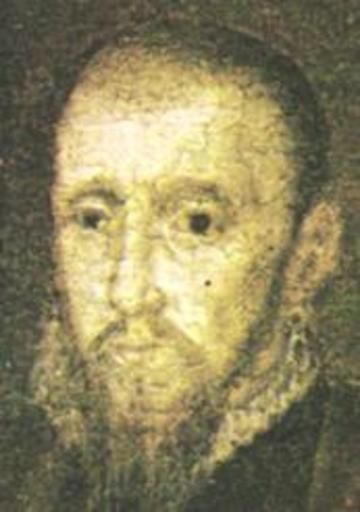MAKE A MEME
View Large Image

| View Original: | Edward_Seymour,_Brother_of_Queen_Jane.jpg (173x246) | |||
| Download: | Original | Medium | Small | Thumb |
| Courtesy of: | www.flickr.com | More Like This | ||
| Keywords: jane seymour janeseymour edward seymour edwardseymour united kingdom unitedkingdom henry viii henryviii six wives of henry viii sixwivesofhenryviii nicholas hilliard nicholashilliard queens of england queensofengland Seymour was born in about 1506, to Sir John Seymour and Margery Wentworth, a celebrated beauty, immortalised in the works of John Skelton. Edward's first marriage, to Catharine Fillol, was annulled when it was discovered she was having an affair with his father. His second marriage was to Anne Stanhope. Edward was the eldest brother of Jane Seymour, who would become Henry VIII's third queen consort. When Jane married the King in 1536, Seymour was created Viscount Beauchamp 5 June, and on 15 October 1537 Earl of Hertford. He became Warden of the Scottish Marches and continued in favour after his sister's death in 1537. Their brother, Thomas, also gained power through their sister's advancement and married Henry VIII's sixth wife, Dowager Queen Catherine Parr, shortly after the death of the King. Seymour's nephew became Edward VI on the death of Henry VIII. Edward Seymour retained great influence over the boy king, Edward VI, in whose name he ruled the country, and was created Duke of Somerset on 15 February 1547, early in King Edward's reign. Following his victory over the Scots at the Battle of Pinkie Cleugh, his position appeared unassailable. However, the Seymour brothers had accumulated enemies and grudges during their time in royal favour, and, shortly after his brother Thomas's downfall in 1548, Edward, too, fell from power. His position, although not his office of Protector, was taken by John Dudley, 1st Earl of Warwick, later 1st Duke of Northumberland; his properties (such as Somerset House, Sleaford Castle and Berry Pomeroy Castle) were confiscated by the crown; and he was executed for treason at Tower Hill on January 22, 1552. Seymour was born in about 1506, to Sir John Seymour and Margery Wentworth, a celebrated beauty, immortalised in the works of John Skelton. Edward's first marriage, to Catharine Fillol, was annulled when it was discovered she was having an affair with his father. His second marriage was to Anne Stanhope. Edward was the eldest brother of Jane Seymour, who would become Henry VIII's third queen consort. When Jane married the King in 1536, Seymour was created Viscount Beauchamp 5 June, and on 15 October 1537 Earl of Hertford. He became Warden of the Scottish Marches and continued in favour after his sister's death in 1537. Their brother, Thomas, also gained power through their sister's advancement and married Henry VIII's sixth wife, Dowager Queen Catherine Parr, shortly after the death of the King. Seymour's nephew became Edward VI on the death of Henry VIII. Edward Seymour retained great influence over the boy king, Edward VI, in whose name he ruled the country, and was created Duke of Somerset on 15 February 1547, early in King Edward's reign. Following his victory over the Scots at the Battle of Pinkie Cleugh, his position appeared unassailable. However, the Seymour brothers had accumulated enemies and grudges during their time in royal favour, and, shortly after his brother Thomas's downfall in 1548, Edward, too, fell from power. His position, although not his office of Protector, was taken by John Dudley, 1st Earl of Warwick, later 1st Duke of Northumberland; his properties (such as Somerset House, Sleaford Castle and Berry Pomeroy Castle) were confiscated by the crown; and he was executed for treason at Tower Hill on January 22, 1552. | ||||